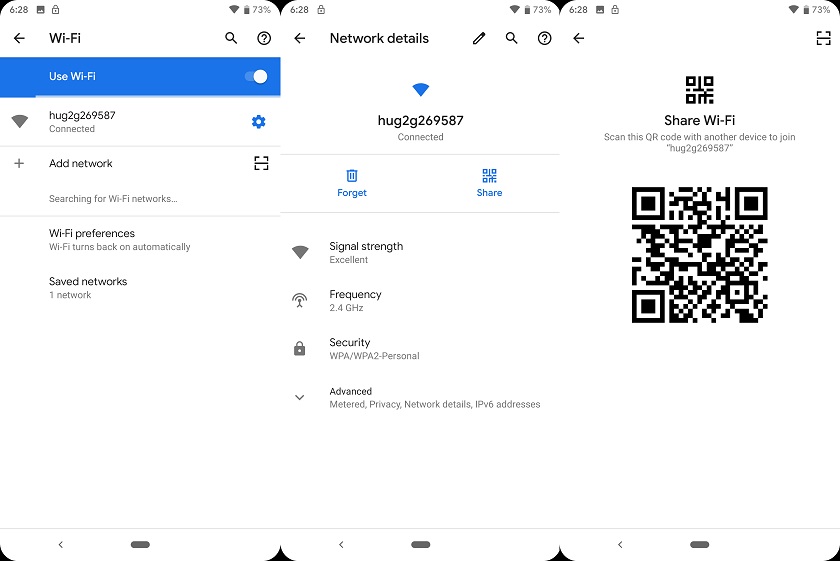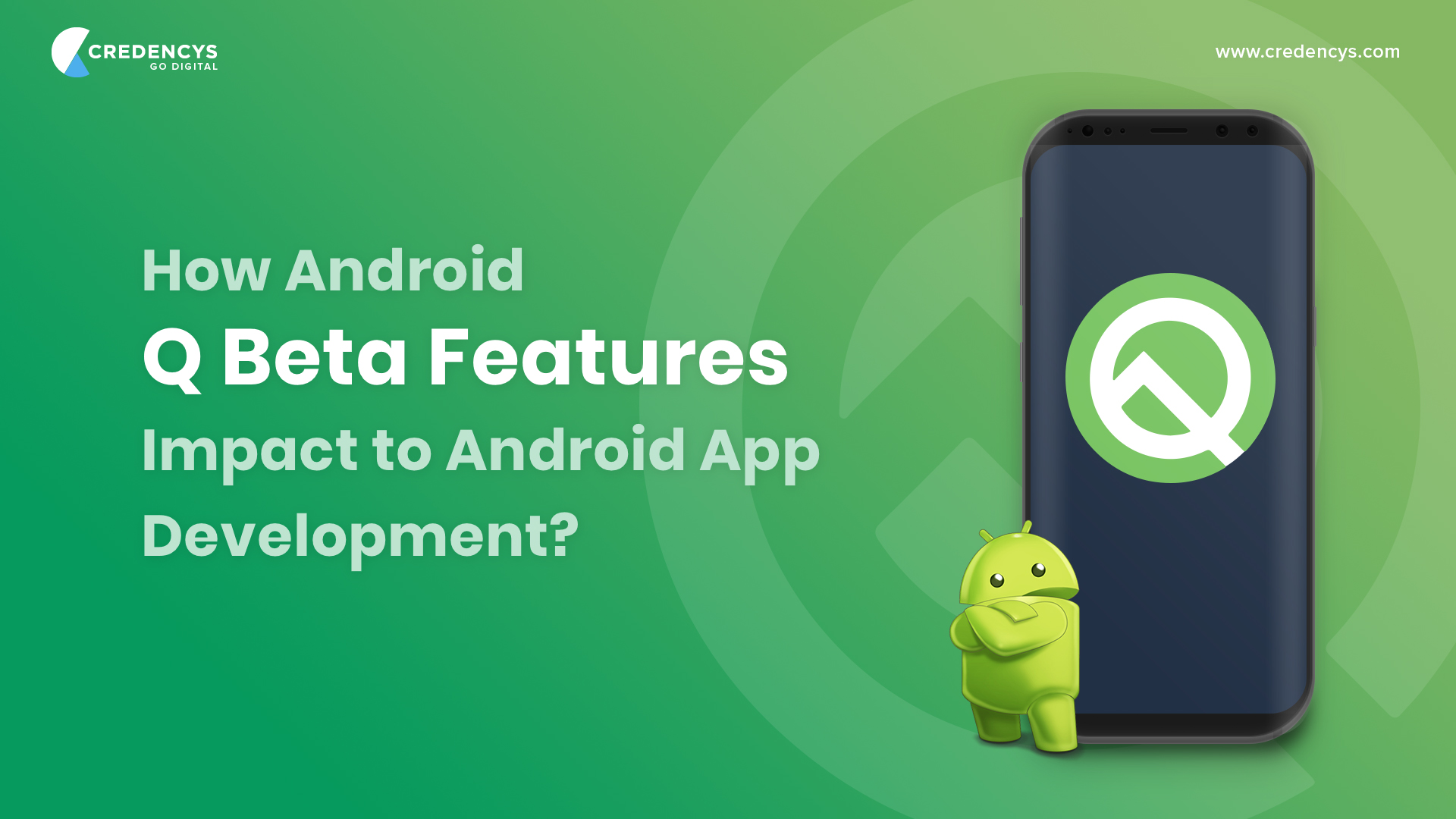How Android Q Beta Features Impact to Android App Development?
Finally, Android Q is here with a beta version for Android app developers. Since 2008, 24 versions of the Android operating system has been released by Google and continues to make considerable investments to develop, and improve the operating system.
This time, Google comes up with a pretty significant update, Android Q with amazing features. So, next time when you are thinking for Android app development service, consider its latest version, Android Q.
Google didn’t use the beta version for a long time ago. But, in 2019, it seems to be an exception as Android Q Beta has been released by Google with its first preview. For its users, Android Q Beta offers more privacy, smoothness and flexibility to the newest generation of foldable phones. Also known as Android 10, Android Q comes with a list of features that revealed on May 7, 2019, in California at the Google IO 2019. Before knowing the standout Android Q features, let’s see the release date.
March 13: The first Android Q developer beta has released
Early April: Android Q beta 2 on or around April 1
Early May: Android Q developer beta 3 on or around May 1
Early June: The final incremental update, beta 4, will be available in June, 2019.
July: Beta 5 and beta 6, release candidates, may available in July, 2019.
August: The final release has happened in August, 2019.

As we all know that Android Q will finally out in August 2019, it would be great to update your app for Android Q with extended support, stronger protection for user privacy, Vulkan extensions and more.
Most of the users have a question, ‘How much will Android Q cost?’ It is assumed that this update is a free update like previous ones. So, let’s move forward to discuss the latest Android Q features. Please note, we are focusing on a chunk of features coming in the full update, confirmed by the Google.
Talking about the initial improvements,
- The green robot includes the limits of the access apps that will have to video, photos, audio, and downloaded files on devices.
- Developers will get push a pop-menu through a new settings panel API to make setting related to NFC, Bluetooth, and Wi-Fi, so users won’t have to exit apps to go to settings and back.
- As promised by Google, it gives users total support for foldable phones
- Enhanced sharing shortcuts by designing to make sharing targets more obvious, so users can jump into other applications.
Dynamic Depth Format
A new depth format, Dynamic Depth Format, is brought by Google Android Q that allows users to do depth-editing in many third-party apps.
Stated in Android Developers Blog, “Starting in Android Q, apps can request a Dynamic Depth image which consists of a JPEG, XMP metadata related to depth related elements, and a depth and confidence map embedded in the same file on devices that advertise support.” It is also confirmed by Google that this latest format allows third-party apps to tweak depth data to make “specialized blurs and bokeh options.”

Foldable support
One of the biggest features for 2019 is support for “foldables and innovative new screens”. This feature will let developers make their apps ready for the big, folding screens of the top-tier phones with back-end changes.
To take benefit of large-screen devices, Android Q comes with changes to onResume and onPause that support multi-resume and inform your app when it has focused. This update also changes the working style of the resizeableActivity manifest attribute that helps users to manage the application on foldable and large screens.

Setting panels
A new setting panel API has also been introduced by Android Q that lets users toggle settings, pertaining to the app. Now, users can able to toggle things like cellular data, NFC, audio volume, Wi-Fi, etc. within the in-app web browser. After this update, users don’t require to navigate the setting menu again and again, as accessing settings is simple and easy.
Privacy on the Top
Android is designed, considering privacy as a top priority. With every version update, Android is getting matured and thus, it comes with a lot of features like OS controls requiring apps to request permission before accessing sensitive resources, locking down camera/mic background access, lockdown mode, Google Play Protect, etc. to protect its users. In this version, Android Q has made enhancement as part of the work in Project Strobe to protect its users.
Android Q Dark Theme
Android Q dark theme is one of the rumored features that expected to available with this release. The site XDA Developers leaked Android Q’s dark theme images that tech expert Owen Williams confirmed that it was the first developer beta.
HELLO system wide dark mode pic.twitter.com/DfuGjmeUTG
— Owen Williams ⚡ (@ow) March 13, 2019
Allegedly, it is available through Display Settings and Settings and Files will turn a dark gray in the main interface. Other parts like Notifications, Volume panel, Quick Settings turned to black to display against the darker background.
Wi-Fi sharing through QR codes
We have seen a feature of sharing Wi-Fi credentials via QR codes in Xiaomi and Huawei smartphones for a long time now. All thanks to Google Android Q, now other android users also able to share Wi-Fi through QR codes by just tapping Wi-Fi connection, hit the share button, then authenticate with your phone’s password or a fingerprint. From here, users should find a QR code and that code that can be scanned by their friend to gain access.

A better files app
Android users didn’t have a shortcut in the app drawer for their files app, but again thanks to Google Android Q, as the latest release has the new app with a shortcut and offers a revised UI, a universal search bar at the top, and quick access to other apps.
There is a chance that Google could tweak this app before its final version release, however, it will deliver something more polished than the previous version.
Wi-Fi Performance Mode
Now, users can request adaptive Wi-Fi in Android Q by enabling low latency modes and of course, high-performance. It delivers a great advantage where low latency is much important to the user experience like active voice calls, real-time gaming, and similar use-cases. Call WifiManager.WifiLock.createWifiLock() with WIFI_MODE_FULL_LOW_LATENCY or WIFI_MODE_FULL_HIGH_PERF to use the new performance modes. In this mode, the platform works along with the device firmware to meet the need with lowest power consumption.
What else?
Enroll here to get Android Q Beta updates on any Pixel device (including three generations of Pixel — Pixel 3, Pixel 2, and the original Pixel). It’s simple – isn’t it? You will also get downloadable system images for those devices as well.
Don’t have a Pixel device? Not to worry, as you can also use the Android Emulator, and download the latest emulator system images through the SDK Manager in Android Studio.
In addition, if you want to make your existing app supportable to the latest Android Q version, contact our expert Android app development team. We are also providing 30-minutes free consultation to sort out your queries.









Tags: